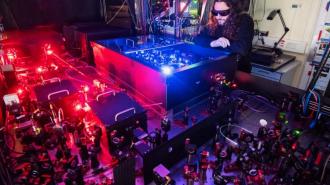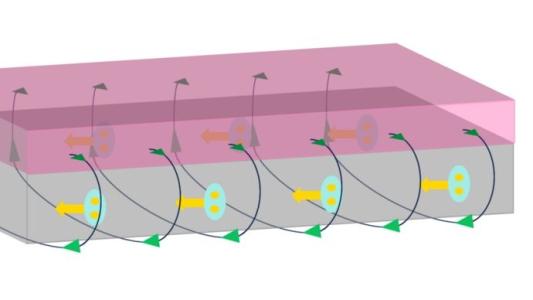Last spring, I attended a conference where a leading expert in quantum computing gave an overview talk about the state of her field. Afterward, over coffee, I asked her how long before we would have working, practical quantum computers. She looked at me gravely and said, “Not for a very long time.”
Her quick response was remarkable given what we are told about progress in the field. From breathless media accounts, many people assume that quantum computing machines are just around the corner. It turns out that is not the case at all. Here, I want to explain why the billion-dollar rush into quantum computing may not yield results for many years to come.
What is a quantum computer?
Before we begin, what is a quantum computer, and what makes it different from a normal computer like the one you’re reading this on? The answer can be summed up in a single word: the state. (Okay, technically, that’s two words.) Normal or “classical” computers perform logical operations using binary digits or bits. Mechanically, these are pieces of electronics that either can be in the “on” or “off” state (think “0” or “1”). By manipulating zillions of these bit states at high speeds, classical electronic computers perform wonders of mathematics and logic to execute programs and do cool things like let us bank electronically or, better yet, play video games. A quantum computer, however, would lean on the strangeness of quantum states.
Thanks to the weirdness of quantum physics, a quantum system can be in two mutually incompatible states at the same time. For example, imagine that an electron is placed in a box divided into two sections. Classically, the “state” of this system only can be the electron occupying one section of the box or the other. Quantum mechanical states, however, can be “superposed,” meaning the electron can be in both sections of the box at the same time. It’s only when a measurement is performed on the electron (that is, someone looks at it) that the superposed state is said to “collapse,” and it’s observed in one or the other section of the box. A system like an electron and the two-section box is called a quantum bit or a “qubit.”
A few decades ago, it was shown that if you could string together qubits in the same way as you string together electronic bits, something amazing could happen. In principle you could exploit the weird “in-two-places-at-once” nature of qubits to perform certain kinds of complex computations insanely faster than a classical computer. Since the first application for quantum algorithms targeted breaking cryptographic protocols that the internet runs on, people got really interested in quantum computing really quickly.
Dude, where’s my quantum computer?
Now it’s many decades later, so why don’t we have quantum computers in our pockets replacing our cell phones? The answer lies in those superposed quantum states. Qubits, it turns out, are very delicate.
If atoms can be in superposed states, why can’t you? Why can’t macroscopic objects like your body be in two places at once, like being in the kitchen and the bedroom at the same time? The answer is that superpositions are easily broken. Even a slight tickle with another passing particle is enough to make a superposed electron state collapse. Scientists call this decoherence. Your body cannot exist in a superposed state because all its atoms are constantly interacting with all the atoms of the surrounding world. Any attempt to get your squillion zillion atoms into a coherent superposed state would instantly get thwarted by even one collision with an air particle.
Decoherence is what kills quantum computing. To carry out the kinds of calculations that would matter for real-world applications, you would need many qubits being held in their perfectly superposed states even as they are coupled together and interacted with other parts of the computer. That turns out to be really, really hard.
Initially, it was hoped that it would be possible to gather hundreds or even thousands of qubits and then use what is called noisy intermediate-scale quantum (NISQ) techniques. This is a kind of quantum error correcting method that allowed most of the qubits to fall apart but in a way that preserved the integrity of the handful you want to compute with. While there has been some really cool progress with NISQ, we are simply not even close to the point where a useful real-world machine can be built.
Beyond NISQ there are some other interesting alternatives. One method involves creating a different kind of qubit out of so-called topological states, which are collections of more fundamental particles in special arrangements. It is very cool physics, but it is anybody’s guess if it will play out in the way we need for quantum computing to live up to its promise.
Personally, I want to see that promise fulfilled. There really are remarkable possibilities hiding in those quantum superposed qubits. But it also may be the case that nature simply will not allow us access to them in the way we need anytime soon.
This article was reprinted with permission of Big Think, where it was originally published.






